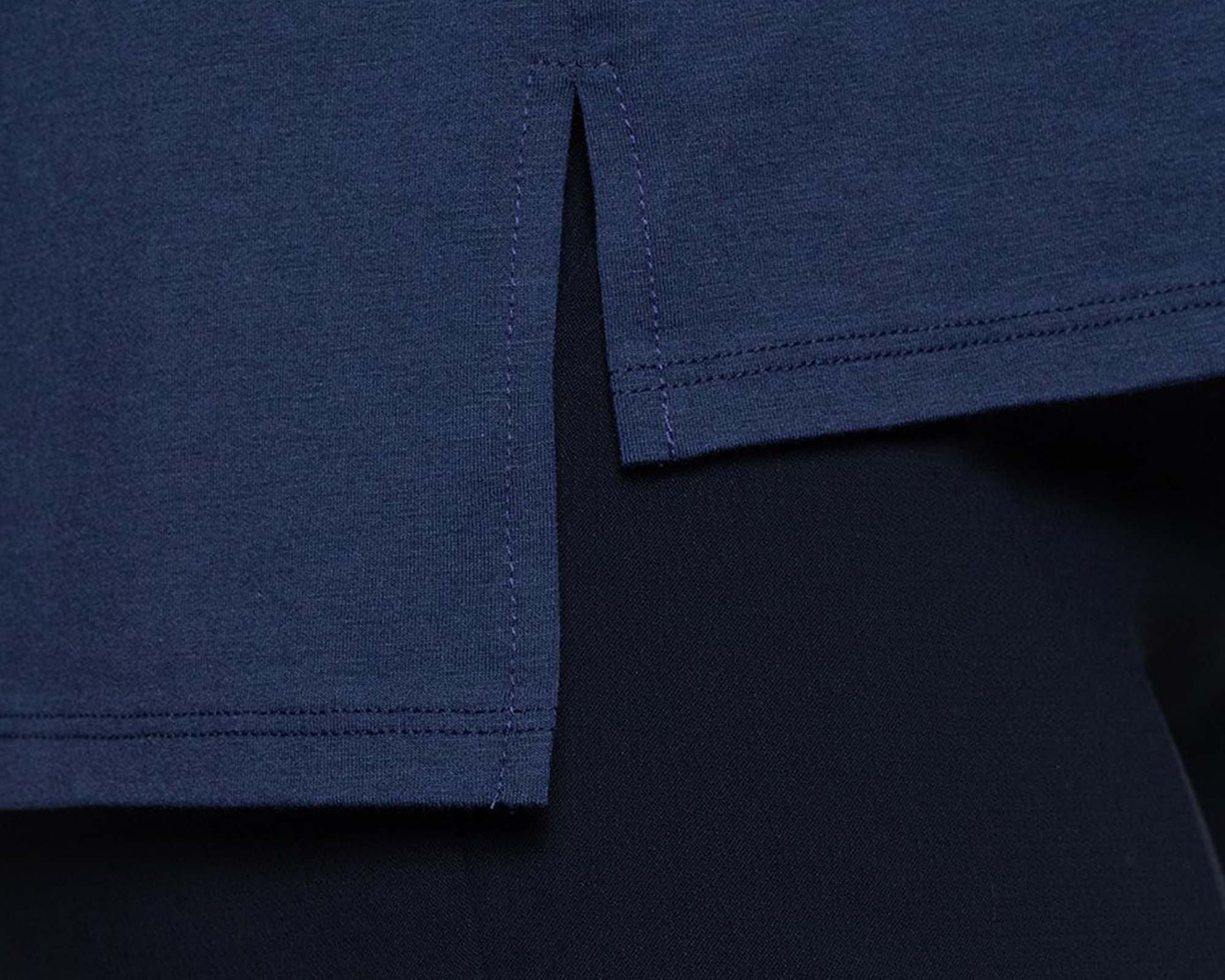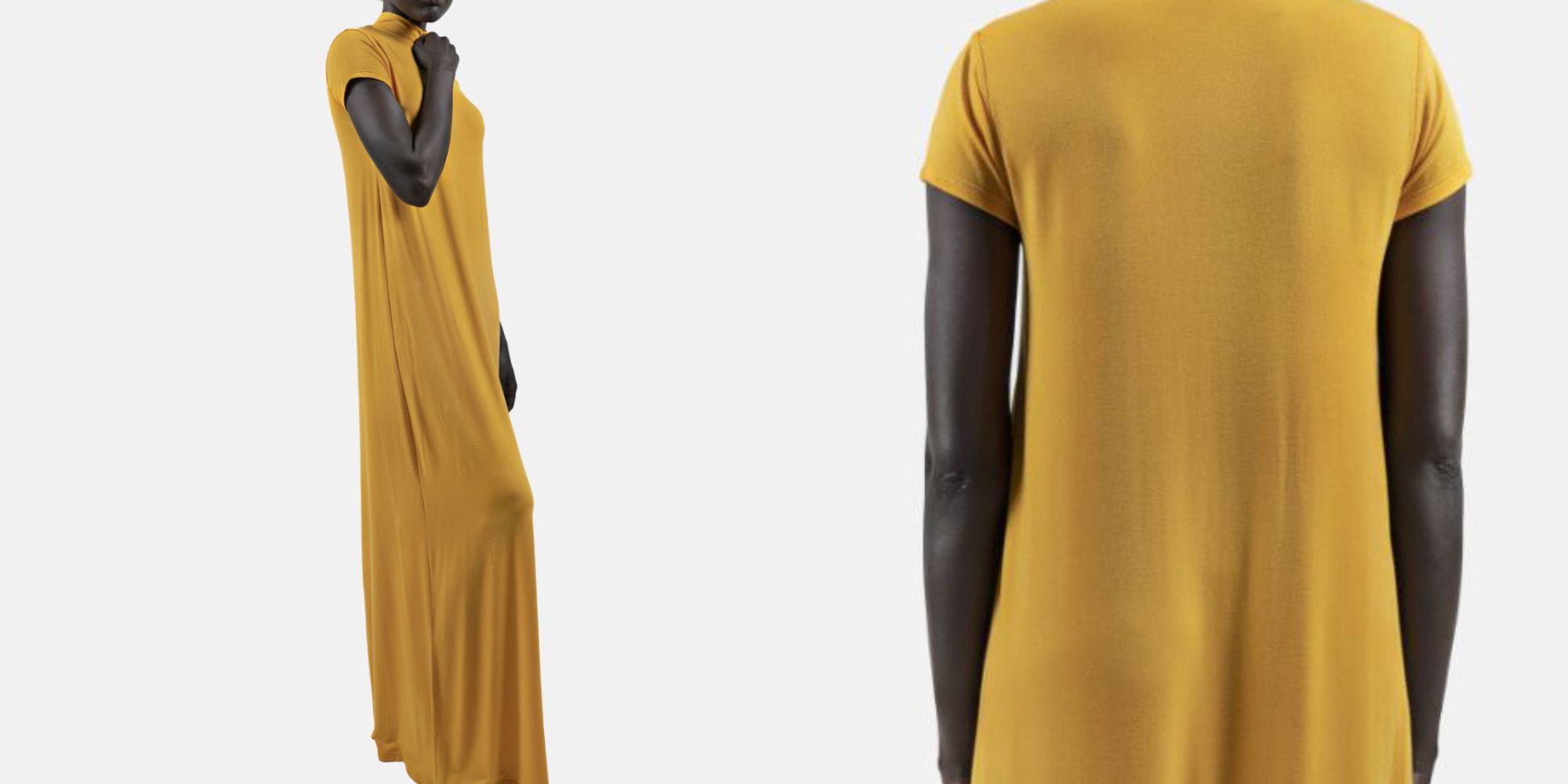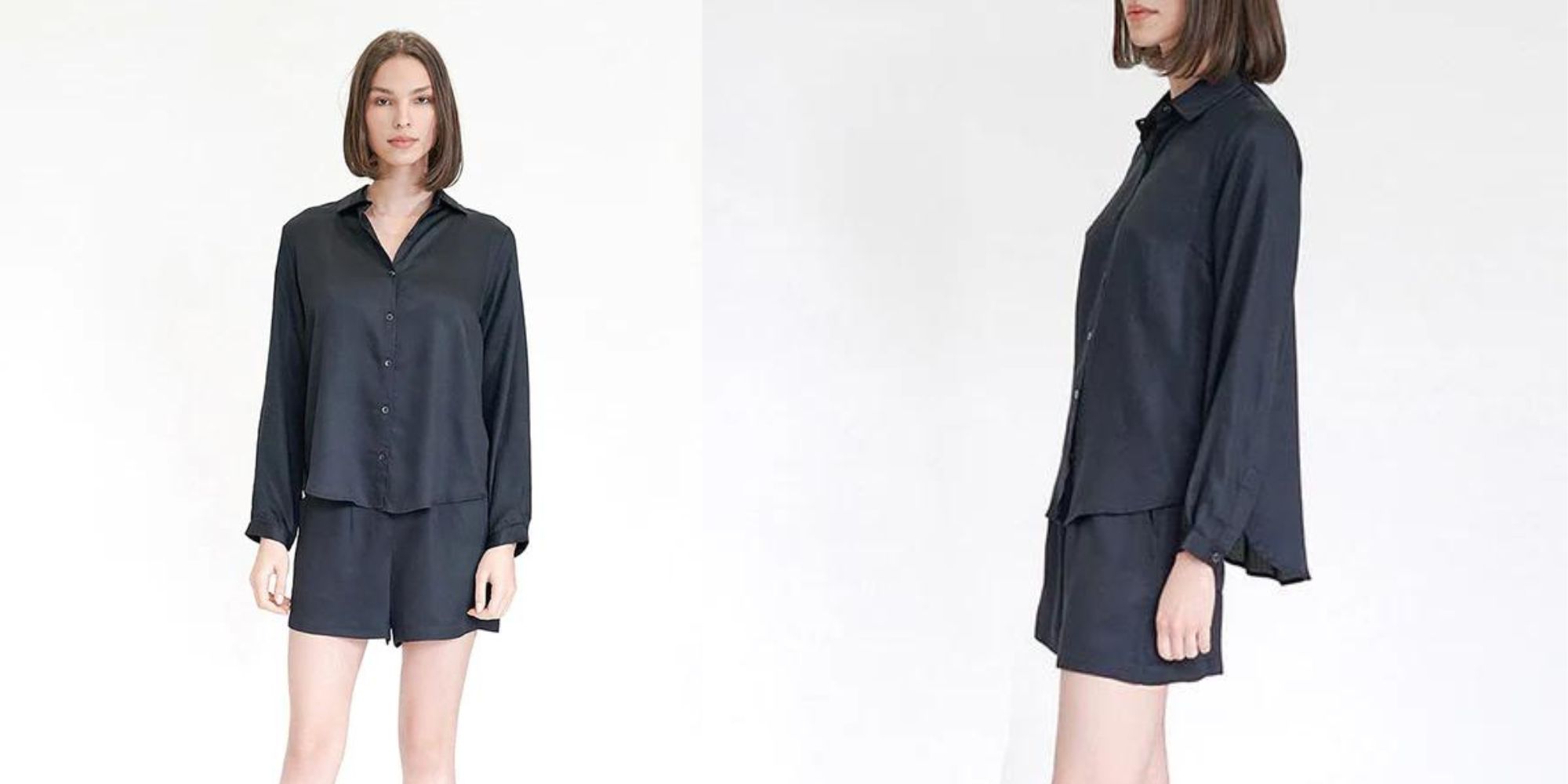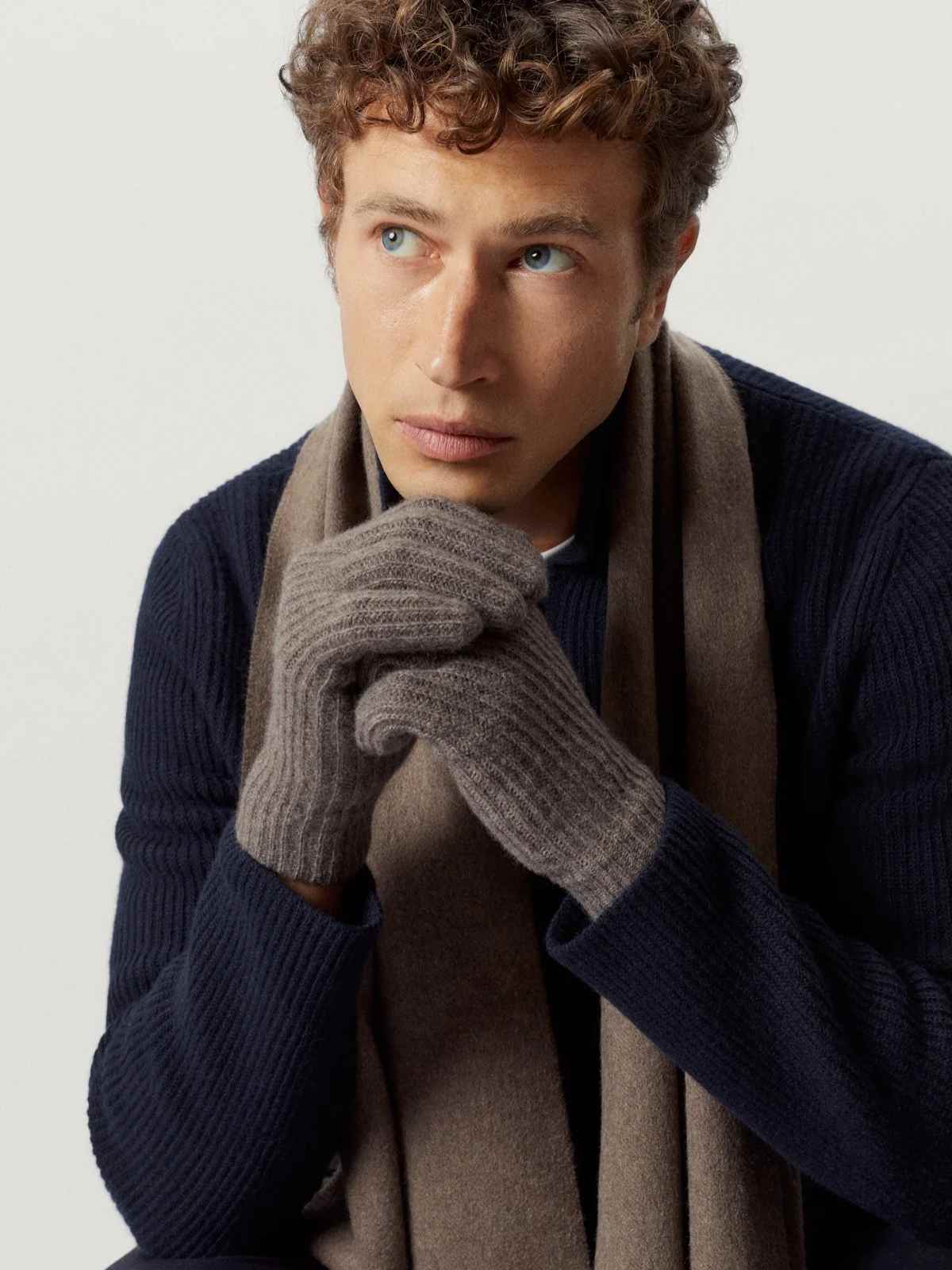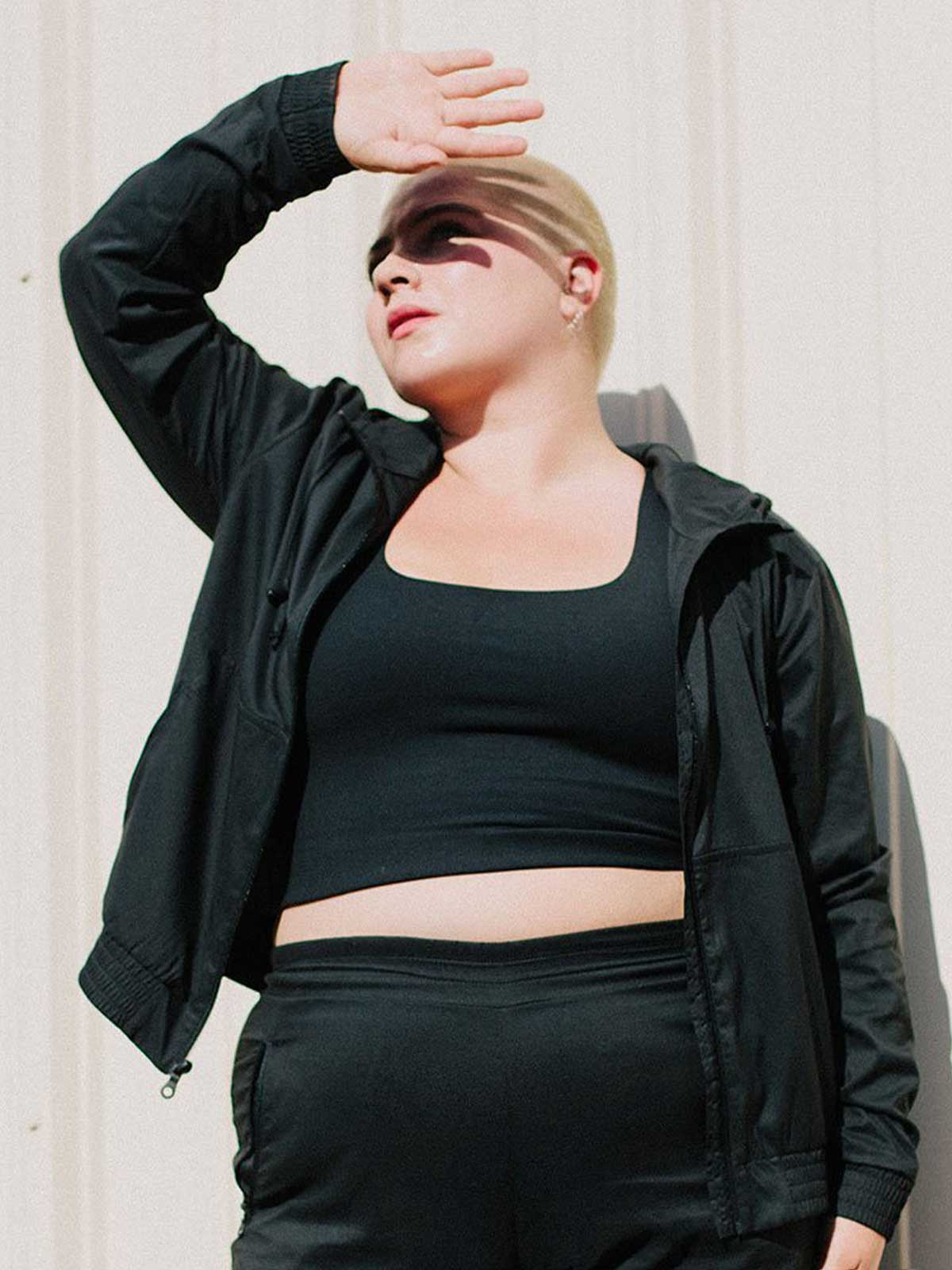Our editors curate highly rated brands that are first assessed by our rigorous ratings system. Buying through our links may earn us a commission—supporting the work we do. Learn more.
Many brands use modal in their products as a lower-impact alternative to viscose due to its specific characteristics—but its sustainability status is complicated. Read on as we answer the question: how ethical and sustainable is modal?
What is modal and how is it made?
Modal is a man-made cellulosic fibre that has found fame in the age of activewear. Breathable and absorbent, this cotton alternative is used to manufacture underwear, pyjamas, bathrobes, bed sheets, and more.
The manufacturing process involves spinning reconstituted cellulose mainly from beech trees. The wood fibres are pulped into liquid form and then forced through tiny holes, creating the thread. The resulting fibres are then spun into yarns—sometimes in blends with other fibres such as cotton or elastane. These yarns can then be woven or knitted into fabric.
Modal is the generic name for a variant of viscose (viscose aka rayon—here’s our take on the sustainability of viscose). Essentially, modal goes through an additional process that makes it somewhat stronger than traditional viscose. Breathable and silky smooth to the touch—and with impressive resistance to shrinkage and pilling—modal is around 50% more water-absorbent per unit volume than cotton. Boasting similar properties to other cellulose fibres, it’s designed to absorb the dye and stay colour-fast when washed in warm water, making it a popular choice for garments that sit close to the skin. Some modal is still made in Japan, where it was originally developed in 1951, but the vast majority is now produced in China.
How does modal impact the environment?
Modal is not inherently sustainable or environmentally-friendly, but it can be a lower-impact fibre under certain circumstances. It is also technically biodegradable and can be recycled. According to the Sewport guide on modal, “It is up to individual manufacturers to follow the manufacturing processes that will result in environmentally-friendly fabrics.” So, what issues does modal production face?
There are two main environmental issues to be aware of when it comes to modal. As modal is created from tree fibres, consumers should be aware of both the trees’ source and the effects of processing them into fibre.
Forest destruction
As with viscose, sourcing wood to turn into modal risks the destruction of native forest. Although, as garment production platform Sewport says, many manufacturers “only use cellulose from trees that have been grown on land that is not suitable for any other agricultural purposes” or use more sustainable types of wood like bamboo. But where the trees come from is essential, and according to Textile Exchange, without responsible forestry, man made cellulosic fibres (MMCFs) like modal cannot be deemed sustainable.
For example, in 2020, the Rainforest Action Network alleged less reputable manufacturers of forest destruction in Indonesia. According to sustainable fashion commentator Summer Edwards, “Modal that has been produced in Indonesia is known to be manufactured with plantation woodstock that is grown in areas of rainforest that have been clear-felled to make way for monocrop timber plantations”.
Harmful chemicals
The second issue is the chemicals. During the production of viscose fabrics, concentrations of caustic soda are used to dissolve and purify the cellulose. This step, called “xanthation”, uses the infamous neurotoxin carbon disulphide, which can then be introduced into the environment through the air or contaminated water. Not only does this harm any animals who come in contact with it, but it’s also devastating for the people who make the clothes, who can experience serious medical problems from liver damage, to blindness—even death.
Thankfully, modal manufacturing is slightly lower-impact than viscose, as it uses less chemicals in its production process. Many rayon manufacturers have also started to use chemical scrubbers or machines to trap the chemicals before they make their way into the ecosystem, further reducing harm.
However, while conventional modal didn’t make the cut in the top three tiers of our internal fabric ranking because of these contentious issues, not all hope is lost. One version of modal is ranked “third best”, putting it ahead of the most damaging fabrics like polyester and conventional cotton.
Better modal
For modal to be better, we want to be assured it was sourced from renewable forests and that the chemical processing was done at the highest standards, including minimising chemical emissions to air or water.
Today, one of the best-known producers of modal is the Austrian company Lenzing AG, which now markets its version under the name TENCEL Modal (previously Lenzing Modal). Note that “tencel” is often used to mean TENCEL Lyocell (a more sustainable alternative we talk about below), but that brands saying TENCEL could now refer to the Lyocell or Modal fabric, so it’s worth clarifying.
TENCEL Modal is protected by a global certification system. Lenzing has developed environmental processes for manufacturing its modal, which are not currently commercially available to others. These less toxic technologies allow Lenzing to have high recovery rates of process ingredients, minimising emissions and conserving resources.
The trademarked TENCEL Modal is harvested from PEFC or, less commonly, FSC more sustainably-managed beech tree plantations in Austria and surrounding European countries. Other modal fibres on the market are often less transparent and may not be harvested from renewable sources.
The environmental footprint of TENCEL Modal is lower than other forms of modal—it has reduced carbon emissions, requires less land per tonne than cotton fibres, and has a water consumption level that’s 10-20 times less than that of cotton. Many brands, therefore, see TENCEL Modal as a good lower-impact choice for their garments.
The catch
However, a key factor in all of this is that Lenzing does not produce ready to wear fabrics. Instead, the company sells yarns to mills and manufacturers who, in turn, make fabrics. The environmental impact involved in weaving fibres into fabrics can be significant, with conventional methods using high levels of water and chemicals.
As a consumer, it’s hard to know where the modal used in your clothes comes from unless the brand is transparent. Be sure to look out for Lenzing and TENCEL branding in the product descriptions when shopping for modal clothes.
Recent innovations
In February 2021, Lenzing unveiled pioneering TENCEL Modal fibre with Indigo technology to help elevate sustainability in the denim industry. Lenzing has partnered with leading supply chain partners, including denim mill Candiani Denim, a client of our friends over at Eco-Age. The new TENCEL branded modal fibre with Indigo technology uses a one-step spin-dyeing process to deliver indigo colour while using substantially fewer resources and was awarded the EU Ecolabel for meeting high environmental standards.
According to Textile Exchange, the market is also seeing increased investment in recycled man made cellulosic fibres (MMCFs), and with the support of brands, we can expect more recycled options to become available in the coming years.
How does modal compare to other semi-synthetic cellulosic fibres?
Due to its properties and smooth handfeel, modal is often compared to viscose and lyocell.
Although the production for modal and viscose are similar, modal fibres are much stronger and more durable (especially when wet), but also lighter and more breathable. Conventional modal is somewhat less harmful than viscose as it produces fewer chemical emissions; as noted above, TENCEL Modal is better again as the fibre sources come from more sustainably-managed forests, and far less chemicals are emitted. But it’s far from the least harmful material going.
Of all man-made cellulosic fibres, we consider lyocell–particularly Lenzing’s TENCEL Lyocell–to be the most environmentally-friendly. Indeed, we classify TENCEL Lyocell as a second-tier or “good choice” fabric.
TENCEL Lyocell is made using an organic solution that replaces the sodium hydroxide used in modal production. It also uses a closed-loop solvent system, which means that no solvent is wasted or dumped into the ecosystem. As with modal, it is also technically biodegradable and can be recycled.
In summary
It is essential to consider both the source materials and fibre processing, and the weaving, cutting, and transportation process when thinking about the sustainability of a fabric. In addition, different countries and manufacturers apply different environmental standards.
Be sure to choose brands with transparent production processes to ensure you’re making the most ethical choice. We recommend assuming that modal is only a little more sustainable than viscose unless the brand is clear that it is TENCEL Modal or specifies both that the source fibre comes from PEFC or FSC certified forests and that it is processed in a high quality facility with high environmental standards, including the capture of a high percentage of chemicals in the processing stages.
Here are some “Good” and “Great” rated brands using more sustainably-produced modal.




